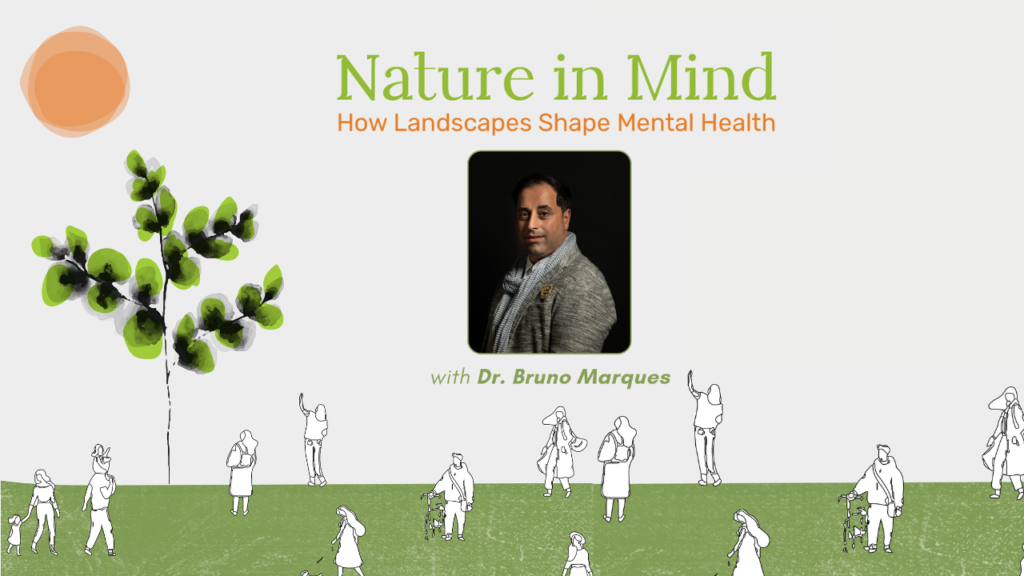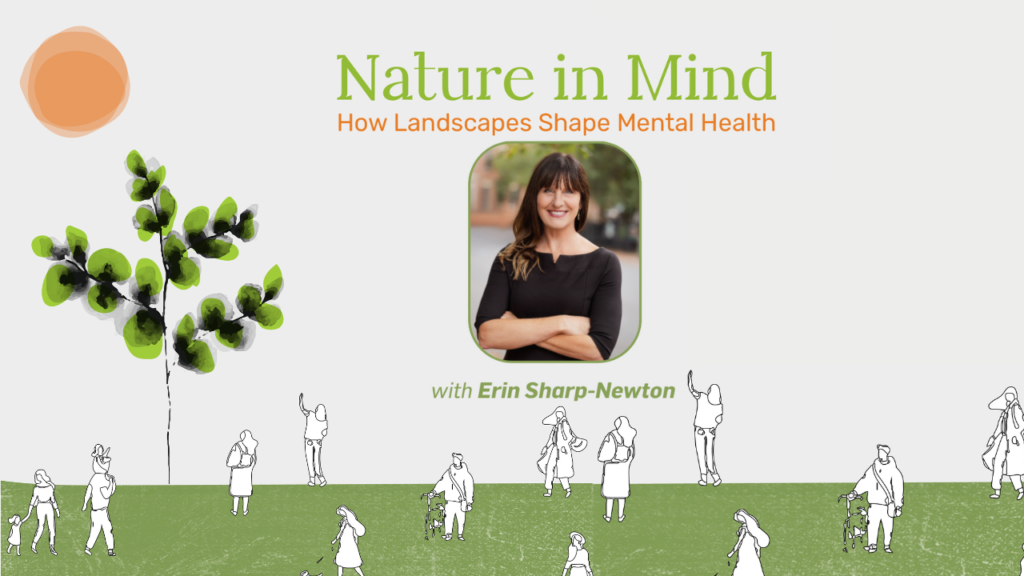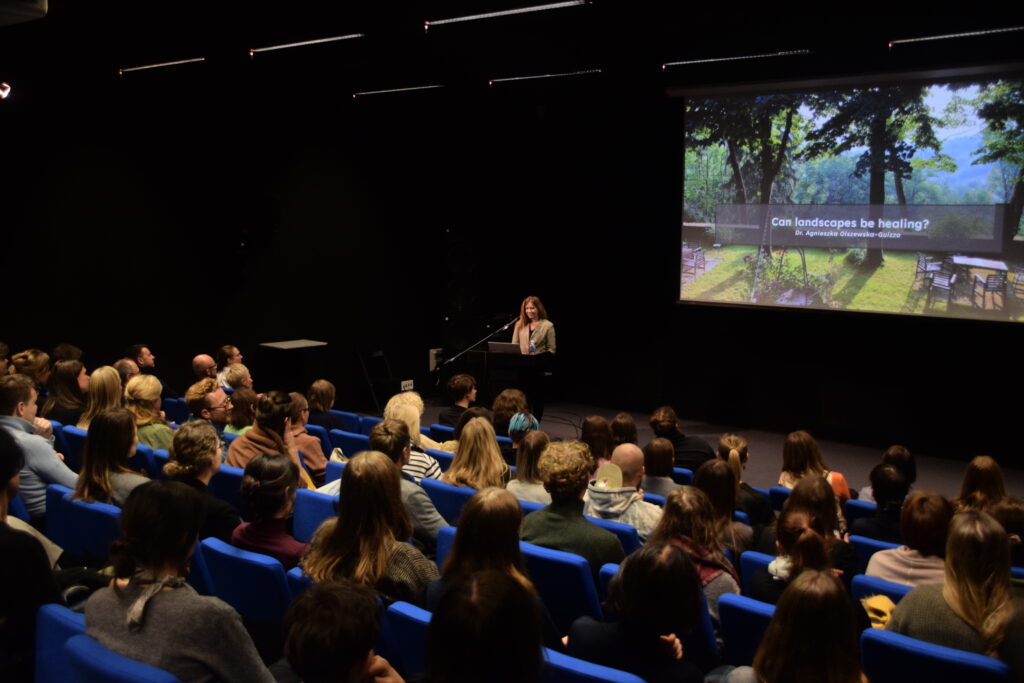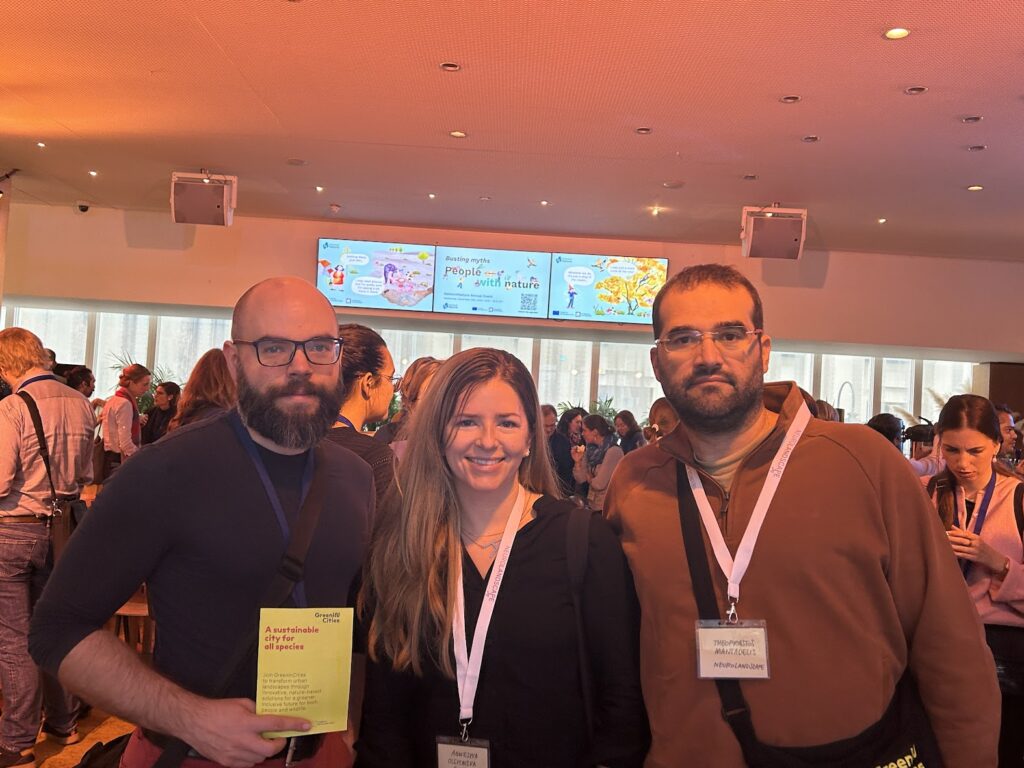A LinkedIn Live Online Roundtable This World Health Day 2025, join us for a powerful round-table conversation about women’s mental health, safety, and the role of nature in wellbeing. Women face unique challenges when it comes to mental health, especially in motherhood and other vulnerable life stages. Research has shown time and time again that Read More
Tag: nature
Nature in Mind: Interview with Dr. Bruno Marques
Dr Bruno Marques is a landscape architect and educator. He completed his Landscape Architecture studies at the University of Lisbon (Portugal) and Berlin Technical University (Germany), followed by his PhD studies at the University of Otago (New Zealand). Bruno has practised in Germany, Estonia, the United Kingdom and New Zealand, having an extensive portfolio of Read More
Nature in Mind: An Interview with Erin Sharp-Newton
Erin Sharp-Newton, M. Arch, is the 2024 President for the American Institute of Architects Central New Jersey (AIACNJ.org) and serves as the Director of the Centre for Urban Design and Mental Health (UD/MH), founded by Dr. Layla McCay. She has been a Fellow of UD/MH since 2016 and holds the role of Section Editor of Read More
“A Talks” cycle ✨ Mental health – What does Architecture Have to do with it? ✨
5th November, at 19:00. National Art Gallery in Vilnius, Lithuania Our CEO Dr. Agnieszka Olszewska-Guizzo gave a talk titled “Can landscapes be healing?”at the National Gallery of Art in Vilnius. In this talk, Agnieszka explored the intersection between landscape architecture and neuroscience, which led to the creation of Contemplative Landscapes. She presented the science behind Read More
Network Nature Annual Event
NetworkNature Annual Event 2024 | Busting myths: People with nature 24-25 of September, 2024 | Brussels, Belgium The NeuroLandscape team just returned from an incredible few days at the NetworkNature EU Annual Event in Brussels! What a wonderful blend of insightful discussions, knowledge-rich myth-busting panels, and interactive hands-on workshops, all reinforcing the key message of Read More
How Urban Design Can Impact Mental Health & Well-being
Our cities are often designed with function in mind. We build parks for exercise, wider sidewalks for pedestrians, and bike lanes for commuters. While we have made progress towards building healthier bodies, we have overlooked the equally important mental well-being. Urban design has a powerful influence on the quality of its citizens’ life, especially mental Read More
Building Back Differently: The Role of CLM in Public Health Promotion through Nature-based Solutions
“The future of humanity is undoubtedly urban,” warns the UN-Habitat in their World Cities Report (2022), urging public health policies to address the growing health risks associated with urban expansion. Urban environments — characterized by traffic, pollution, noise, and overcrowding — not only create fertile ground for physical health issues but also place a significant Read More
Visiting Nature’s Embrace: A Singapore Exhibition Showcasing the Healing Effects of Nature
With support from Singapore’s National Parks Board, the Mind Art Experiential Lab of the National University of Singapore’s Yeo Boon Khim Mind Science Centre has curated the “Nature’s Embrace: A Gift to the Mind” exhibition. Open for appointment-based viewing until September 2024, the exhibition allows visitors to explore the connection between nature and mental well-being through serene visuals and calming nature melodies. Not to mention, it also provides techniques that can improve the mind-body-nature connection that you can try at home.
Therapeutic Landscapes, Hospice Care, and Fight Club: An Interview with Landscape Architect Anna Artemeva
“The important thing to understand is that a hospice is not a place where people die, but rather a place where they live out their final stage of life.” Anna Artemeva, Landscape Architect
ICT Solutions for Healthcare | Webinar | 21 October 2021
XIII International Congress of the Spanish Association of Bioethics and Medical Ethics (AEBI) The Organizing Committee and the Spanish Association of Bioethics and Medical Ethics (AEBI) organized the thirteenth edition of the AEBI International Congress that hosted several focused events, including the webinar on ICT solutions for Healthcare. In it our NeuroLandscape VR tool called Read More










